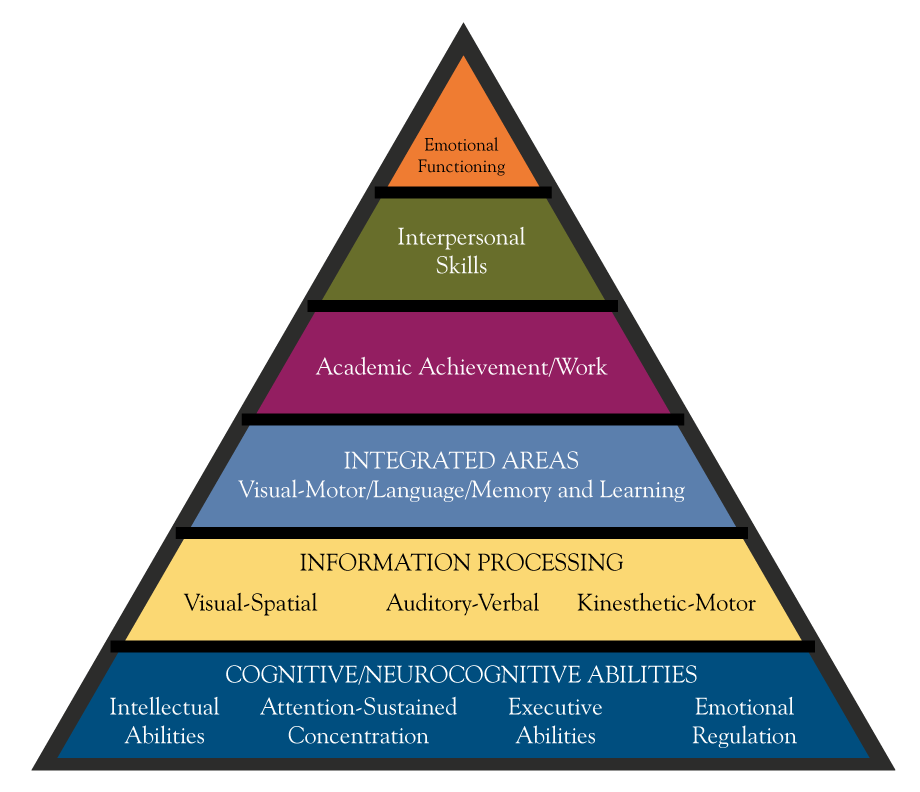When there are problems that won’t get better, no
matter what you try to do to solve them, it might be
time for an evaluation, also called testing. Diagnostic
evaluations are provided for people ages six years or older by Liz Friedman, Ph.D. The type of evaluation that is
appropriate varies for children and adults. It also
depends on the type of problems a person is having.
Evaluations include:
- Neuropsychological Evaluations –
The most comprehensive type of testing which
analyzes multiple areas of functioning including
those listed below
- Educational Evaluations –
Analyzes academic areas of functioning, IQ, and
sometimes information processing
- Psychological Evaluations –
Analyzes social and emotional areas of functioning
- Intellectual Evaluations – Only
IQ testing (usually for
qualifications in gifted programs or advancement to
higher grade levels)
See diagram below for a look at the
hierarchy of these different areas.
Children
Children can experience difficulties in a number
of ways. Often parents or guardians are unsure of
how to decide what to do when a child struggles.
Although there may appear to be one type of problem,
(i.e.: difficulty concentrating) different but
hidden issues could be causing the problem. These
might include difficulties such as basic
understanding of language, visual processing
problems, emotional distress, core attention
problems or a combination of issues. In order to
figure out what type of treatment or strategies will
help, a thorough examination of these underlying
potential contributors is necessary. For many
problems, a comprehensive neuropsychological
evaluation is most appropriate. Limited assessments
such as educational or psychological evaluations are
also available when appropriate.
Adults
Comprehensive neuropsychological evaluations can
often supply important information about core causes or
obstacles that interfere with an adult’s functioning
or ability to attain personal and professional
goals.
After any evaluation is complete, recommendations are
made for next steps such as starting new treatments,
developing new strategies for home, school, or work, and
directly capitalizing on talents and strengths.
